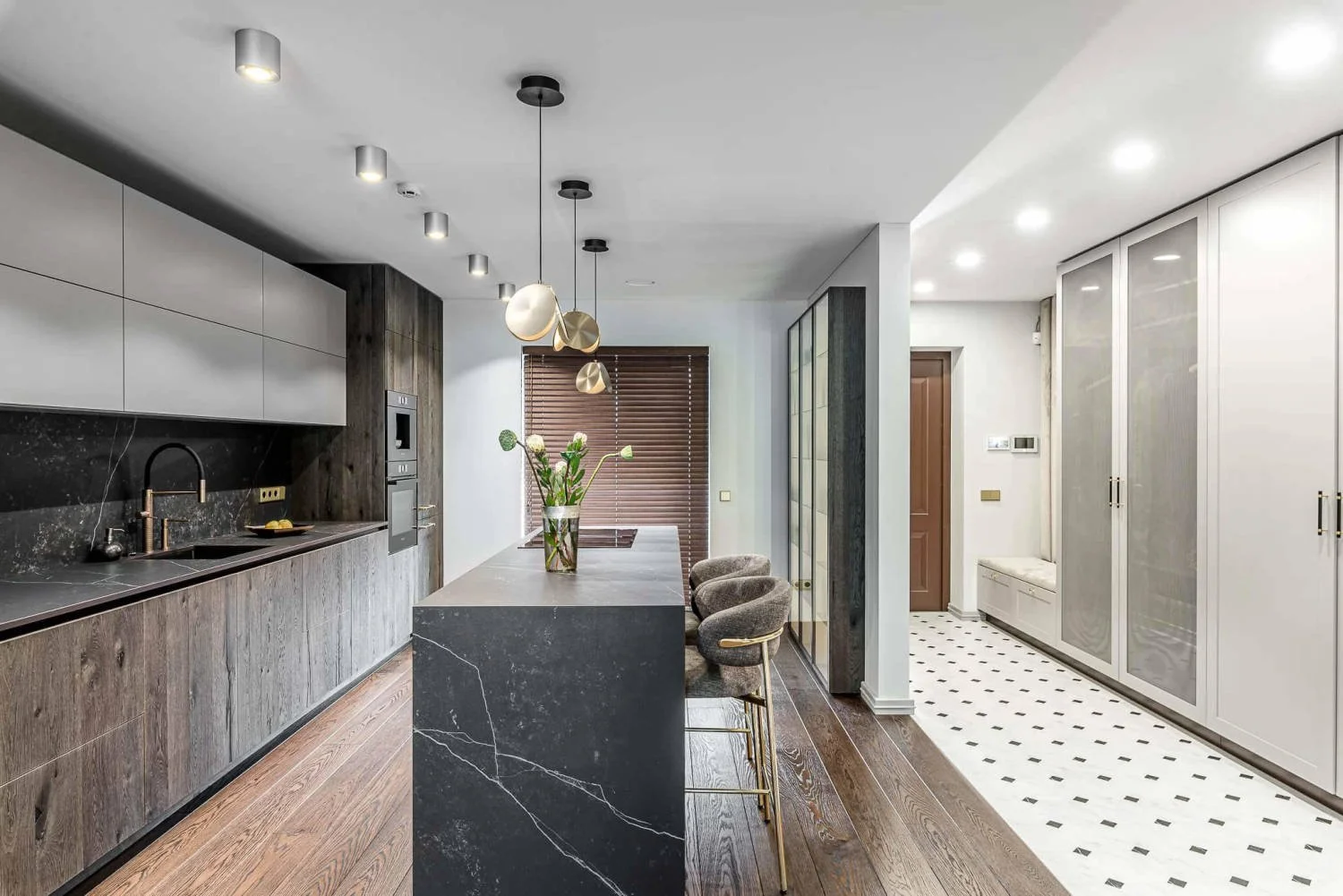The Ultimate Guide to Countertop Materials for Home Renovations: Pros and Cons
1. Introduction
Choosing a suitable countertop material is crucial for any home renovation. Each material offers unique benefits and drawbacks, making it essential to understand the options available to make an informed decision that suits your lifestyle, budget, and aesthetic preferences.
2. Granite
2.1 Pros:
Durability: Granite is one of the hardest natural stones, making it highly resistant to scratches and heat.
Aesthetics: Each slab is unique, offering various colours and patterns.
Value: Adds significant value to your home due to its luxurious appeal.
2.2 Cons:
Cost: One of the more expensive options.
Maintenance: Requires periodic sealing to prevent stains and maintain its appearance.
Weight: Extremely heavy, requiring sturdy cabinets for support.
3.1 Quartz
3.1 Pros:
Non-porous: Resistant to stains and bacteria, making it ideal for kitchens.
Low Maintenance: It does not require sealing and is easy to clean.
Variety: Available in various colours and patterns, including options that mimic natural stone.
3.2 Cons:
Cost: Similar to granite, quartz can be expensive.
Heat Resistance: Not as heat resistant as natural stone; can be damaged by excessive heat.
Appearance: While beautiful, some people prefer the natural look of granite or marble.
3.2 Man-made Quartz (DEKTON)
3.1 Pros:
Low Water Absorption: Water absorption is minimal, ensuring it remains expansion-free.
Resistant to UV: highly resistant to UV light, guaranteeing no fading or degradation over time.
Fireproof: It can withstand high temperatures without burning, scorching, or cracking. It's classified to EN 13501 ASTM E84.
Colour Durability: Precise pigmentation control during manufacturing ensures superior colour consistency between slabs, resulting in a durable product resistant to fading over time.
Scratch Resistant: Boasts one of the highest levels of scratch resistance available today, scoring a seven (7/10) on the Mohs scale for mineral hardness.
External Applications: Its durability against freezing and thawing conditions and its versatility in various weather conditions showcase its exceptional performance.
Abrasion Resistant: Surpasses granite and porcelain in abrasion resistance, making it an excellent choice for high-traffic areas or commercial applications like facades and flooring.
Easy Cleaning: Most marks on worktops can typically be removed using standard cleaning products, reducing maintenance costs.
3.2 Cons:
Cost: Similar to granite, quartz can be expensive.
Appearance: While beautiful, some people prefer the natural look of granite or marble.
4. Marble
4.1 Pros:
Elegance: Offers a timeless and classic look that enhances any kitchen or bathroom.
Excellent Surface: Naturally, it stays cool, making it ideal for baking and pastry preparation.
4.2 Cons:
Maintenance: Highly susceptible to staining and scratching; requires regular sealing.
Durability: Softer than granite and quartz, making it more prone to chips and cracks.
Cost: High-end material with a price to match.
5. Laminate
5.1 Pros:
Affordability: One of the most budget-friendly countertop options.
Variety: Comes in various colours and patterns, including options that mimic stone and wood.
Easy Installation: Lightweight and easy to install, making it a good DIY option.
5.2 Cons:
Durability: Prone to scratches, burns, and peeling over time.
Repairs: Difficult to repair once damaged.
Perception: Considered less luxurious compared to stone or quartz.
6. Solid Surface (e.g., Corian)
6.1 Pros:
Seamless Appearance: This can be moulded to create a seamless look with integrated sinks.
Non-porous: Resistant to stains and bacteria.
Repairable: Minor scratches and burns can be sanded out.
6.2 Cons:
Heat Resistance: Not as heat resistant as stone; can be damaged by hot pots and pans.
Cost: More expensive than laminate but cheaper than stone options.
Appearance: Lacks the depth and natural variations of stone.
7. Butcher Block
7.1 Pros:
Aesthetics: Provides a warm, natural look that is perfect for farmhouse or rustic kitchens.
Functionality: Ideal for food preparation, particularly cutting and chopping.
7.2 Cons:
Maintenance: Requires regular oiling to prevent drying and cracking.
Durability: Susceptible to scratches, dents, and water damage.
Sanitation: Can harbour bacteria if not properly maintained.
8. Concrete
8.1 Pros:
Customization: Can be customized with various colours, textures, and finishes.
Durability: Extreme heat resistance and overall strength.
Modern Aesthetic: Offers a sleek, industrial look.
8.2 Cons:
Cracking: Can develop hairline cracks over time.
Maintenance: Requires sealing to prevent stains and water damage.
Cost: Comparable to high-end materials due to customization options.
9. Stainless Steel
9.1 Pros:
Hygienic: Non-porous and easy to clean, making it ideal for kitchens.
Durability: Highly resistant to heat and stains.
Modern Look: Provides a sleek, contemporary aesthetic.
9.2 Cons:
Scratches: Prone to scratching and denting.
Cost: This can be expensive, particularly for custom installations.
Noise: It can be noisy when objects are placed on it.
10. Conclusion
Selecting a suitable countertop material depends on various factors, including your budget, design preferences, and kitchen use. By understanding the pros and cons of each option, you can make an informed decision that enhances your space's functionality and aesthetics. For a visually appealing and practical kitchen, consider consulting a professional interior designer to find the perfect match for your home renovation project.








